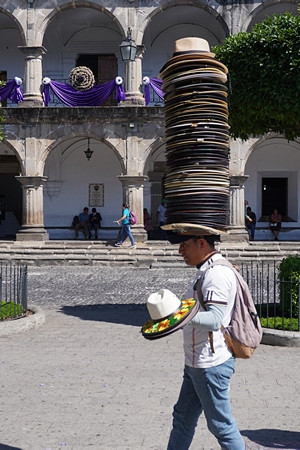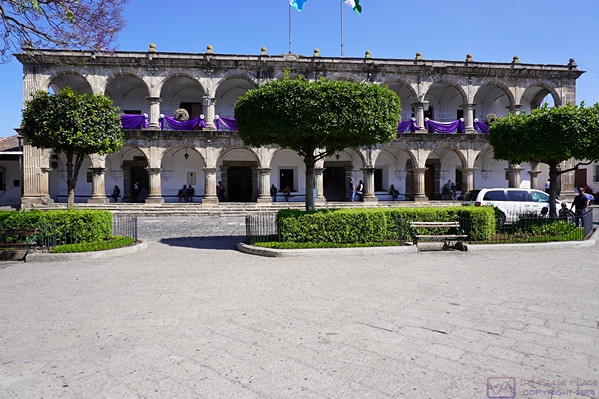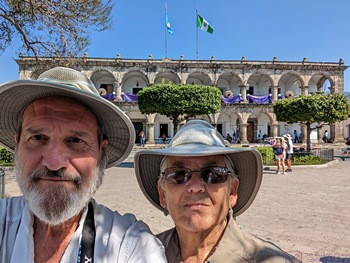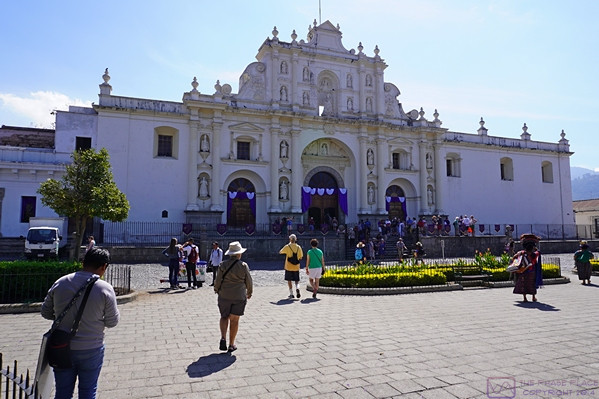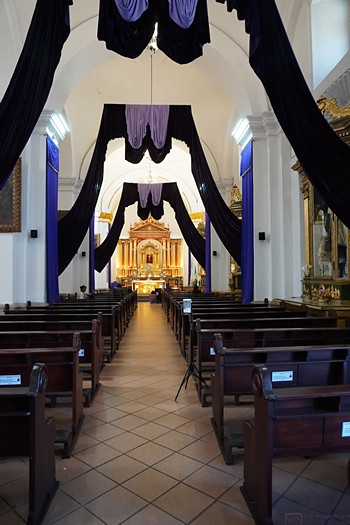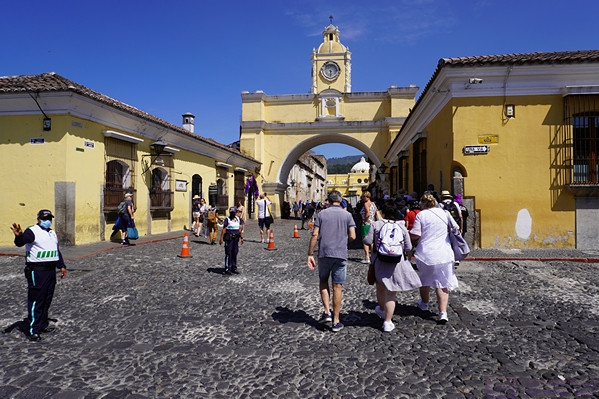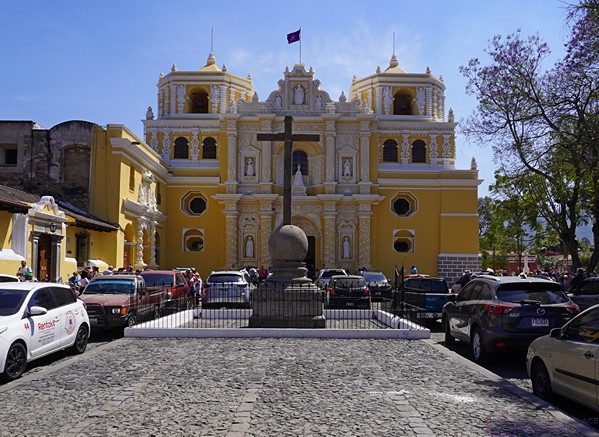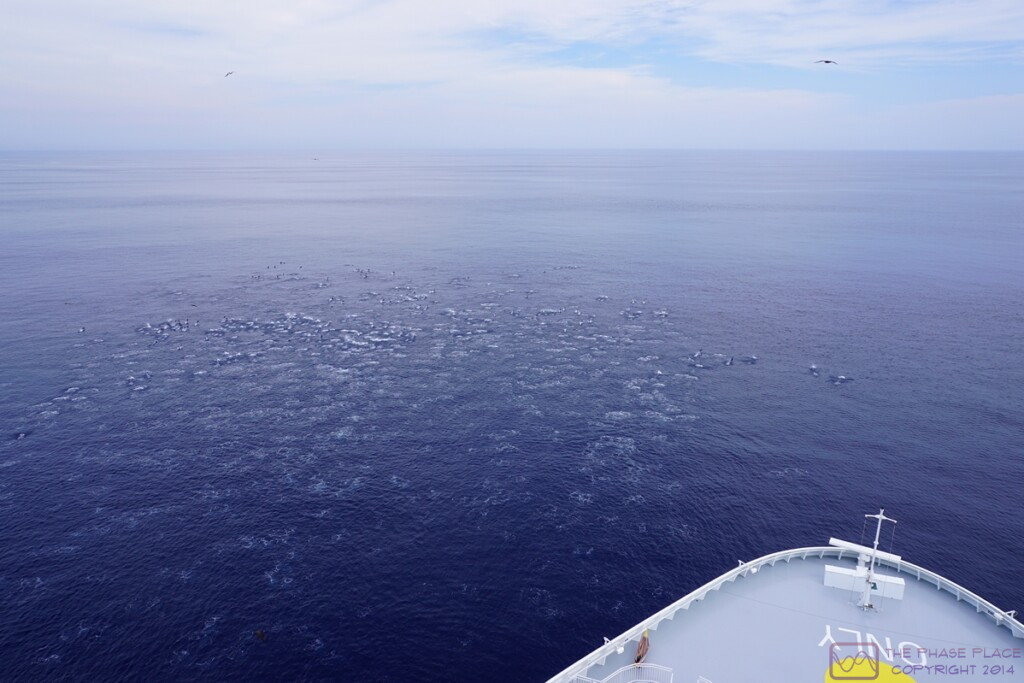[ There are 23 photos in this post. Most of the text is in the form of captions. ]
THURSDAY 02 March – Puerto Quetzal & Antigua, Guatemala
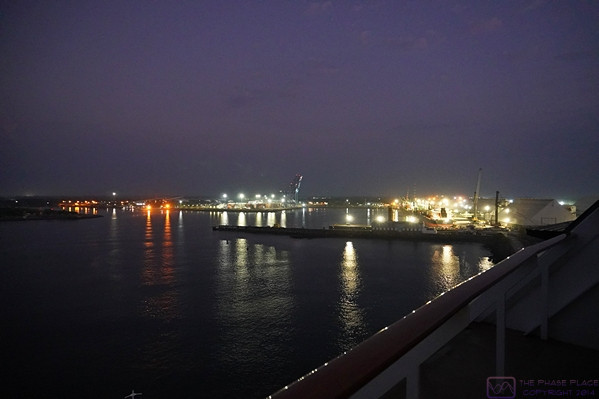
Arriving at the dock in Puerto Quetzal, Guatemala under the cover of darkness. It was a tricky entrance, but the captain handled it like he was parking a small car in an empty parking lot.
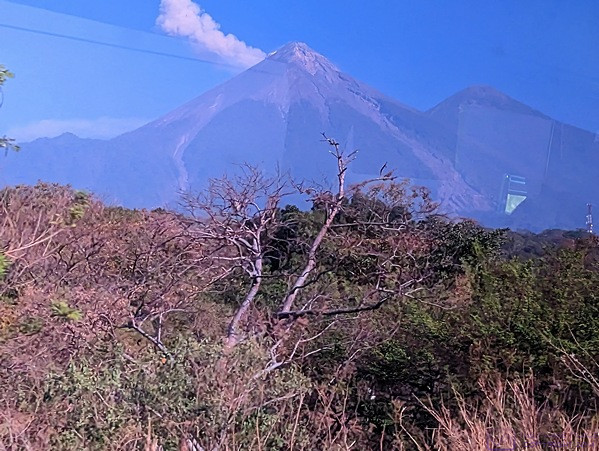
One of the active volcanos we passed on the motorcoach ride from Puerto Quetzal to Antigua, Guatemala. (Photo by Linda)
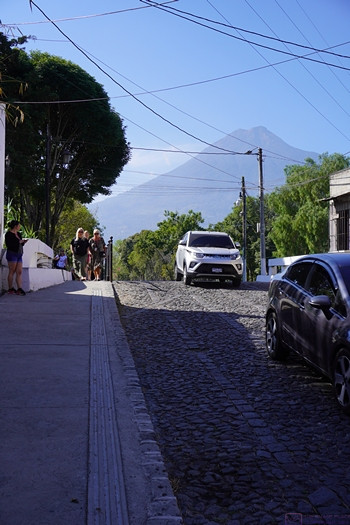
Antigua, Guatemala. Our motorcoach was parked on this street, over the rise in the road, along with many others. In the background, Volcán de Aqua towers over the city and was visible from most places.
We arrived at Puerto Quetzal, Guatemala around 7 AM. Guatemala has a relatively short Pacific coast, and Puerto Quetzal is the only port of any size. It is primarily an industrial port, but more than willing to welcome and accommodate cruise ships.
There was nothing of interest for tourists in the immediate port area, but that was OK. We had signed up for a shore excursion to Antigua Guatemala, a 2-hour bus ride from sea level to 1545 m (5069 ft). A relatively small old city nestled high up in the mountains, it is surrounded by volcanoes, some of which are still active. To the south, Volcán de Aqua, dominates the skyline at 3,766 m (12,356 ft). One of the volcanoes was “smoking” as we drove past.
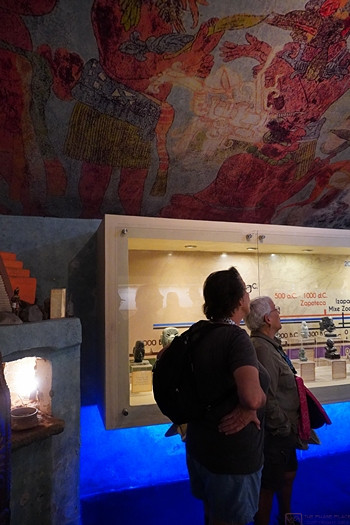
A small slice of the Mayan history portion of the Jade Museum in Antigua, Guatemala. Those of us walking the city on our own gathered here first to use the restrooms and learn a bit about history of the area and city.
Antigua was Guatemala’s colonial capital from ~ 1543 to 1773 when it was severely damaged by an earthquake and the Capital was moved to present day Guatemala City. Many of the buildings were restored, however, and it is now a UNESCO World Heritage Site renowned for its Spanish Colonial architecture.
We did not do a guided tour, but merely wandered around the city soaking in the sites. We also learned that there are still many people in Guatemala with Mayan ancestry, and 31 dialects of the Mayan language are still spoken here. This corroborated what we had learned some years ago on our visit to the Mayan ruins at Tulum in the Yucatan peninsula. We were definitely in a place that was different from any place we had ever been before, and we enjoyed our walk through history.
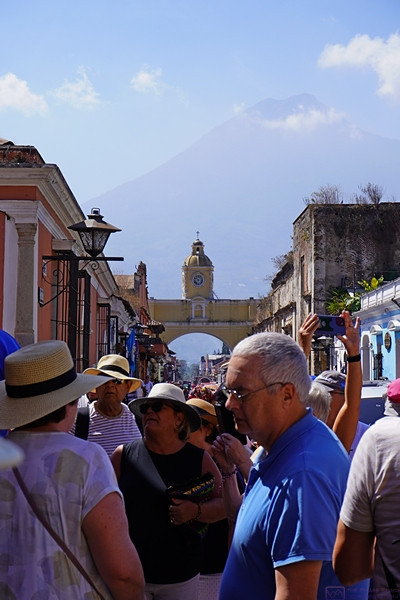
On north side of the entrance arch looking back to the south. Note how Volcán de Aqua to the south towers over the city of Antigua.
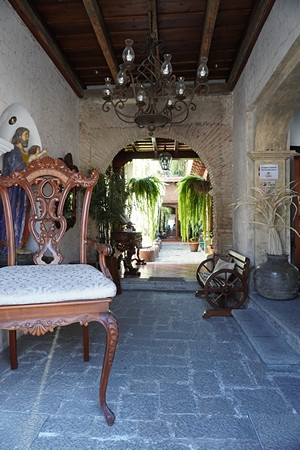
As we walked the streets of Antigua, Guatemala, we often saw openings like this that appeared to lead into very inviting courtyards. Some of them were hotels, some were retail spaces, and some appeared to be private residences. The street-facing parts of most buildings had a very old and minimally maintained appearance, but we suspected that once away from public view, the interiors were much nicer.
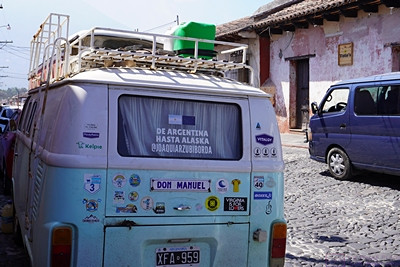
I had to get a picture of this, as it was not something I’ve ever seen in the USA. This van has Argentina plates and the wording under the window, “De Argentina Hasta Alaska” makes it clear what journey the owners are on.
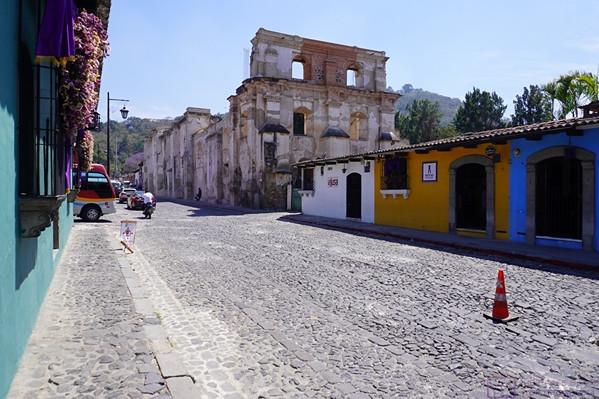
A view down a less crowded street somewhat away from the center of the city. Many buildings here were rebuilt/restored after he devastating earthquake of 1773, but not all of them. There were several abandoned/decaying churches, like this on (on the right) throughout the city, but many others were still in use.
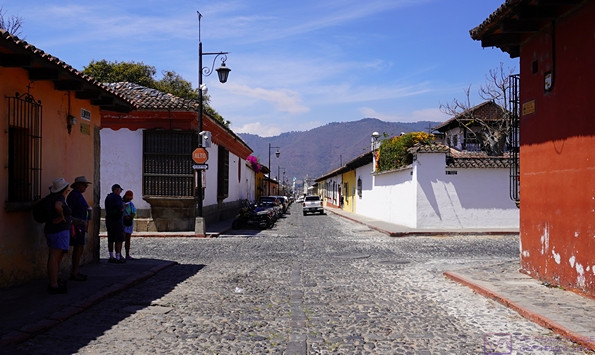
A view down another street, again away from the center of the city. The closer we were to the center of the city the more the streets were choked with vehicles. Most of the streets and avenues, however, where “Una Via” (one way), which they needed to be as there was usually only enough space for one vehicle to get through.
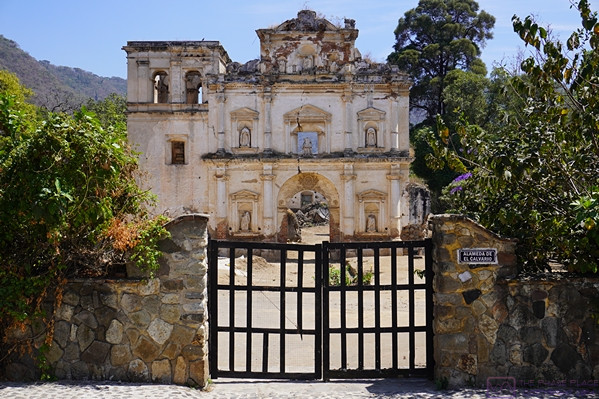
The remains of this church were not far from where our motorcoach was parked. I believe it was one of the buildings damaged in the 1773 earthquake, and never rebuilt.
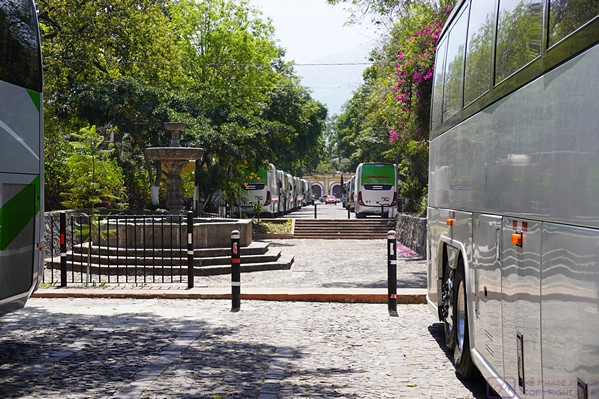
I am interested in motorcoaches, of course, but the main reason for this photo was to capture the shear number of these conveyances that had descended on Antigua the day we were there. On the other side of the plaza there are ~10 motorcoaches on each side of the dead-end street. (They all backed in.) The street on our side of the plaza had a similar number of motorcoaches in the same arrangement. 40 motorcoaches times an average of 50 passengers each is ~2,000 people. It sounds like a lot, but there were many, many more people than that on the streets of Antigua while we were there.
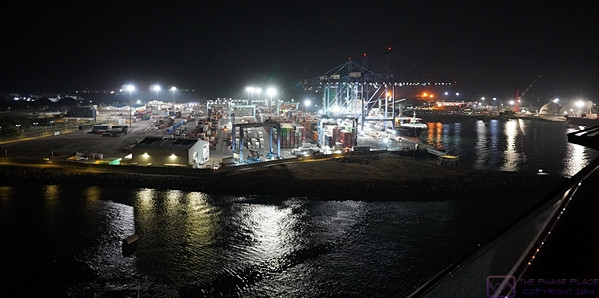
Because some of the shore excursions were of very long duration (over 8 hours) the NCL Joy did not leave Puerto Quetzal until after sunset. Although tugboats were at the ready, the captain backed the ship out, reversing how he had brought it in early this morning in the dark. Some very impressive maneuvering, indeed. (The Joy is over 1,000 feet long and (~130) feet wide.)
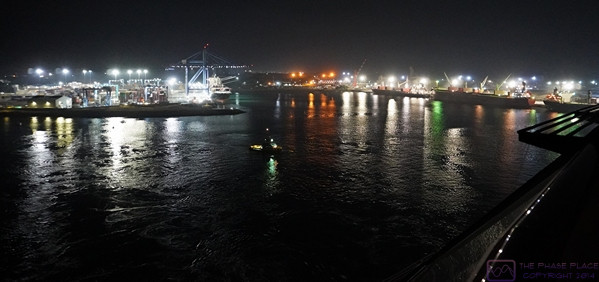
Since our stateroom faced forward (towards the bow) we were treated to a spectacular view of the commercial shipyard lit up and working. The number of containers being handled here would only be exceeded by what we later saw in Cartagena, Columbia. But that will have to wait for a few more days.
FRIDAY 03 March– At Sea
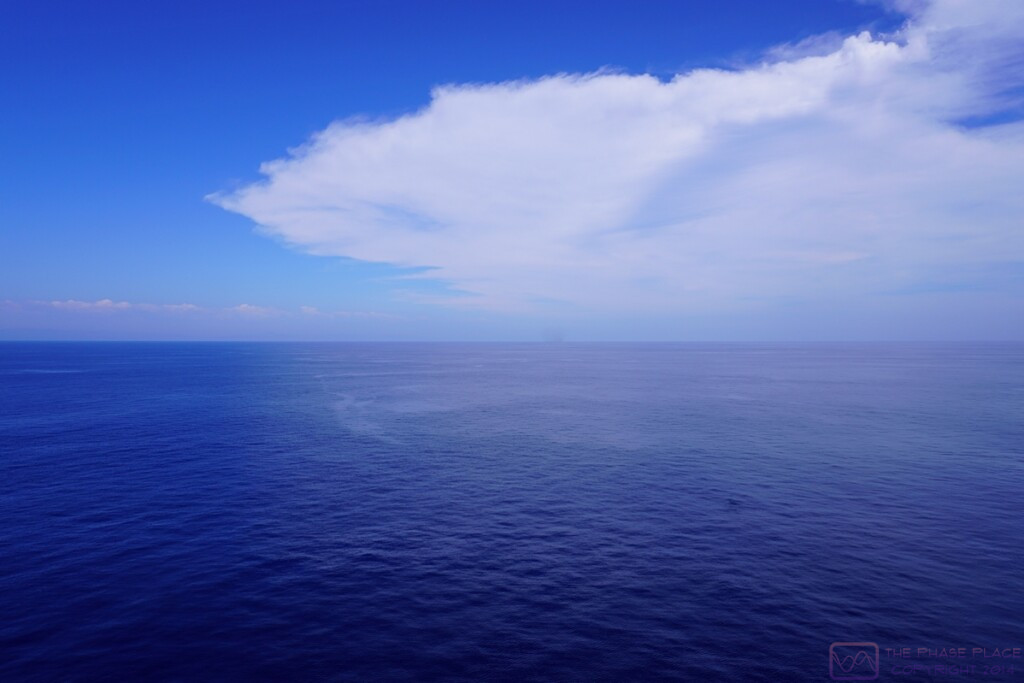
After leaving Puerto Quetzal, Guatemala, we continued cruising along the Pacific Ocean coasts of Nicaragua and then Costa Rica. Land is just barely visible in the haze towards the left side of the photo, but I do not know how far south we were by this point.
Our original itinerary had us in San Juan del Sur, Nicaragua today but the revised itinerary turned it into another day at sea. We were disappointed that Nicaragua was removed from the itinerary, but glad to have had the chance to visit Antigua, Guatemala. Plus, our sea days were quite comfortable aboard the Joy. It was during this leg of the trip that we saw occasional large pods of dolphins, flying fish, and a large number of sea turtles, singly or in small groups, float past the ship. These were highlight experiences for us, but difficult to capture in photos. We spent many hours of rapt attention focused on the water ahead of the ship, looking for the telltale signs of ocean life.
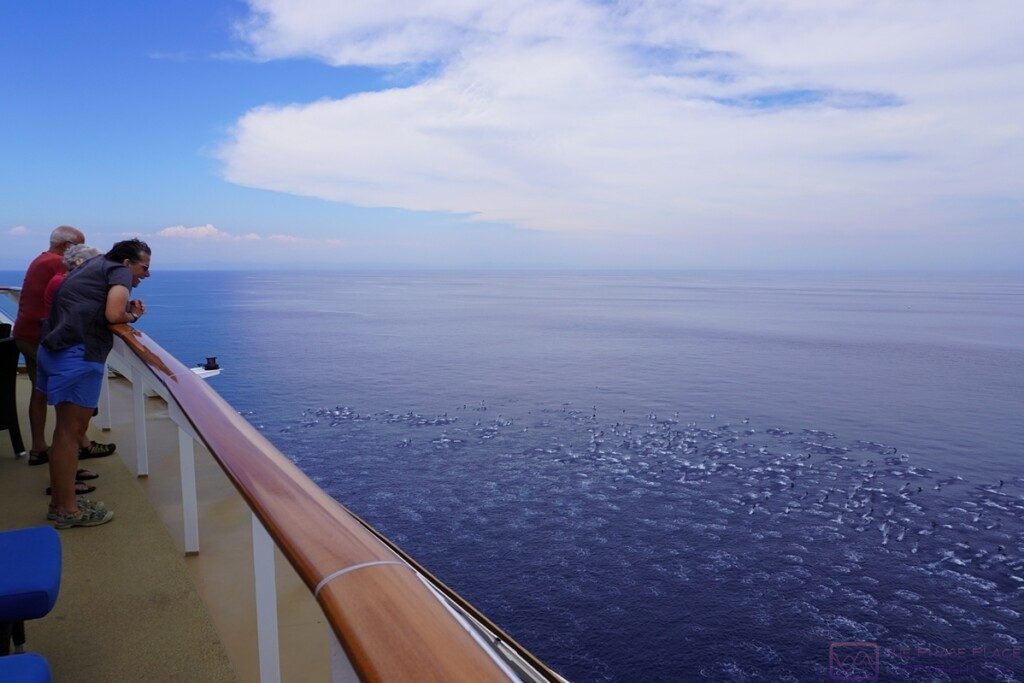
The ship had stumbled upon a superpod of dolphins and we had a front row seat to the show. Some quick research revealed that dolphins usually live in family groups of 10 to 12 individuals, but sometimes these units gather in superpods. Our best guess was that there were at least a couple of hundred individuals in this group. We assumed they were hunting and had found a large school of fish, but we had no idea what kind.
…
